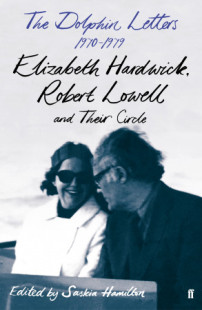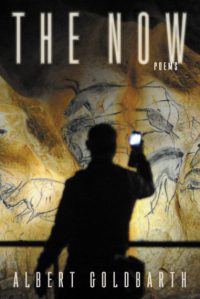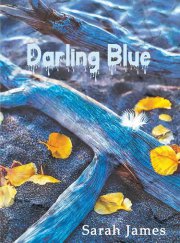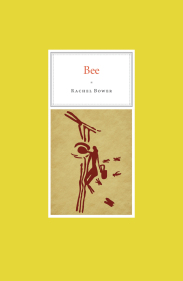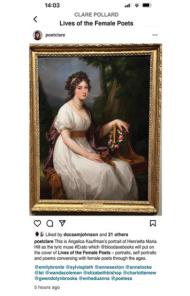
Saskia Hamilton (ed). The Dolphin Letters, 1970-1979: Elizabeth Hardwick, Robert Lowell, and Their Circle. Faber, 2020,
ISBN: 9780571357413. 505pp. £35.00
The poet Czeslaw Milosz once said, 'When a writer is born into a family, the family is finished'. For some this is more than just amusing hyperbole, and confessional poets in particular often face the aesthetic/ethical dilemma of reconciling artistic integrity with discretion. Robert Lowell often crops up in discussions of this kind, partly because he’s associated with the emergence of confessional poetry in late 50s America, but mostly because of his controversial collection, The Dolphin (1973), a sonnet sequence based on the break-up of his long-standing marriage to Elizabeth Hardwick. On a trip to Europe in 1970 Lowell began an affair with the writer and socialite Caroline Blackwood, who he went on to marry. He and Hardwick continued to exchange letters following their split, some of which Lowell incorporated into The Dolphin without her permission. Lowell makes explicit references to Hardwick and their daughter Harriet, revealing intimate details about them, and, as some see it, portraying them in a cruelly negative way. Marjorie Perfloff’s 1973 review offers a flavour of how the book was received:
[Hardwick] is depicted, perhaps unwittingly on Lowell’s part, as Dark Lady or Super-Bitch par excellence [. . .] Poor Harriet emerges from these passages as one of the most unpleasant child figures in poetry [...] Lizzie and Harriet seem to get no more than they deserve. And since these are, after all, real people, recently having lived through the crisis described, one begins to question Lowell’s taste.
The Dolphin Letters provides a context for these events, including the letters exchanged between Hardwick and Lowell, together with other notable correspondents like Elizabeth Bishop, Mary McCarthy and Adrienne Rich. The letters are accompanied by footnotes showing their connections to the two existing versions of The Dolphin, recently published in a single volume: The Dolphin: Two Versions, 1972–1973, also edited by Saskia Hamilton.
Some friends tried to talk Lowell out of publication, among them Elizabeth Bishop in a letter that includes her frequently quoted line, ‘art just isn’t worth that much’. Ultimately Lowell disagreed, and despite revisions, soul-searching, and professed guilt, he decided to publish. The letters suggest that Lowell was never likely to do otherwise - publication appears to have been a psychological imperative: the necessary conclusion to a project that had an obvious therapeutic dimension for him. While The Dolphin won him a Pulitzer Prize in 1974, it also earned him the chagrin of friends like Adreinne Rich, perhaps the most forthright and eloquent of his detractors. Hamilton’s book includes extracts from her review of the collection, originally published in a 1973 issue of American Poetry Review:
[W]hat does one say about a poet who, having left his wife and daughter for another marriage [...] goes on to appropriate his ex-wife’s letters written under stress and pain of desertion, into a book of poems nominally addressed to the new wife? [...] The inclusion of the letter-poems stands as one of the most vindictive and mean-spirited acts in the history of poetry, one for which I can think of no precedent.
There are mitigating factors, and judging from his letters Lowell is capable of compassion and empathy, but it takes a callous reader not to sympathise with Hardwick, who’s revealed as astonishingly magnanimous, sympathetic, and forbearing. While Lowell raised a family with Blackwood in England, for instance, Hardwick continued to manage many of his literary and financial affairs in the States, raise their daughter, and maintain her own career as one of the sharpest literary critics of the twentieth century. At times these struggles seem little short of heroic, as does her ability to remain devoted to Lowell until the end. When his marriage to Blackwood broke down, Hardwick was forgiving enough to set up house with him again. Sadly her misery persisted: on returning from a visit to Blackwood in 1977, Lowell died of heart failure in the airport taxi - at the hospital Hardwick lacked a coin to phone their daughter to convey the news, and was forced to purchase a dime from a stranger at the cost of ten dollars. The death certificate cited Blackwood as Lowell’s ‘surviving spouse’, while she was demoted to ‘friend’; just to compound Hardwick’s misery, in his luggage she discovered a portrait of Blackwood that Lowell had carried home with him from Europe: an image of his ex-wife in bed, painted by Blackwood’s first husband, Lucien Freud.
Hardwick produced her own creative response to these events in a strange and wonderful prose piece, Sleepless Nights (1979), an early section of which is included in The Dolphin Letters. Originally published in The New York Review of Books as ‘Writing a Novel’, it largely omits Lowell, who is present only by implication - it’s a stylistically fascinating piece which anticipates some of the experimental autofictions produced by the likes of Lydia Davis decades later. We wonder, along with Mary McCarthy who discussed the topic with Hardwick, what Lowell would have made of her version: I’m inclined to agree with McCarthy that ‘[h]e’d be put out somewhat in his vanity to find himself figuring mainly as an absence [...] that the reader doesn’t miss’; I’m also inclined to think that it was a justifiable, and psychologically necessary excision. Or do I mean exorcism? Certainly this piece, like her fluent and perceptive letters, reveals Hardwick as a writer whose talent was a match for Lowell’s, and for me it’s one of the principal joys of the book.
The Dolphin Letters is a scholarly volume, but it’s not just for academics or Lowell aficionados: the epistolary narrative has momentum, unpacking a drama that has two captivating characters at its heart, as well as issues that retain their cultural relevance, and moral and emotional force.
Paul McDonald
To order this book click here
Paul McDonald taught at the University of Wolverhampton for twenty five years, where he ran the Creative Writing Programme. He took early retirement in 2020 to write full time. He is the author of twenty books, which cover fiction, poetry, and scholarship. His work has won a number of prizes including the Ottakars/Faber and Faber Poetry Competition, The John Clare Poetry Prize, and the Sentinel Poetry Prize. His most recent book is Allen Ginsberg: Cosmopolitan Comic (2020).
Albert Goldbarth, The Now,
University of Pittsburgh Press, 2020.
ISBN: 978-0-8229-6593-0. 96pp. $17.00.
Albert Goldbarth is concerned with time in all its implications –
past, present, future, evanescence, decay, birth, death, etc. The first section of The Now, entitled “The Book of Tomorrow Today,” concerns itself with how much more quickly things
seem to change. In “Rhapsody at the End of Human Language,” he writes,
In fact, if time is known
by linear and progressive change,
there isn’t time any more,
just simultaneity … as in
This bird was
is
--as soon as “happens” occurs, it’s reoccurred
into its next tense. So this poem is both
the end of human language and
a traditional lyric poem.
Goldbarth also has his tongue
firmly in his cheek as he ponders all of this, evident in his nimble logic (reductio ad absurdum). A winner of the Poetry Foundation’s Mark Twain Award for Humorous Poetry, he seems more
amused by all of this than anything. Channeling science fiction and detective novels, he muses about “once upon a time when there was time” in the poems that follow.
In “My Friend Dayvon, a Flying Saucer Enthusiast (Read:
“Nut”),” he considers how our knowledge bases blend and overlap, “moreso now, / in a googleverse, than ever,“ part of this same phenomenon of the acceleration of time, the blur of distinctions. “You
know: the way they always say
in science magazines that any breath you take may
hold
a remnant molecule of Jesus, Elvis, Cleopatra, the zither-playing
busker on the corner, that dog you buried in 7th grade…they
mix and remix in your pulmonary welcoming
of oxygen, they jockey for attention in your mind.
Provocative, the sci-fi fun continues in poems like “Deep
Down,” which re-hashes the work of Fu Manchu creator Sax Rohmer’s protégé, Cay Van Ash, and “One Definition of Time,”
which invokes the Big Bang in considering the meta narrative of a dancer named Skye Bleu. The ingenious poem “gO” likewise considers concepts like time travel and parallel universes in weaving a
story about astral citizens of the astral plane, a husband and wife who disappear and re-appear through portals in the multiverse. “In the ‘real world,’ that couple has
moved
again, from Ohio. To where? To right here. It
isn’t
accidental all four sections of this poem begin with a capital “O,”
a space-time portal. They’ve tunneled through the back of this poem.
They’re here – a moment only. Given their wanderlust, they’re ready to
gO.
“A Work Week of Muchness” and “A Talky Trip Through Mash-Up
Time” keep it going until he comes to the end of the bewildering Twitterverse in which we live “and the Big Bang / is a quiet door I open / and step out of.”
The governing concept of the next, longest section, “The Book of Disappearances,” is the Taoist notion of “Nothing.” The poem “P.L.” begins with the
question,
- What Is It About Our Lives
I’m not in a war zone, and I don’t
have a cold much less a condition
requiring tubes, requiring knives, and words
like “litigation,” “overdose,” “foreclosure”
aren’t a part of my day … why can’t we
ever find pleasure in this, the real pleasure
of everything that could have happened
but none of it happened,
what is it about our lives that leaves us
always seeking Something
and unaware of the benediction of Nothing?
Goldbarth returns to the idea of time in this section as well.
“You know who’s the greatest // comedian? Time. And every year of our precious lives / is the setup to one if Time’s unfailing // punch lines,” he writes in “Album.” Death, particularly, is a marker
(“Disappearances”). Nothing lasts forever. “I’m tired of my student Scott Galloway,” “Change,” “Makes the Beauty” and “Fraud” hammer this home, cancer deaths, the annual death of vegetation, the
transmutation of personality— he covers it all. “Fraud” ends with a reflection on youth: “We were going to live forever! / That was Life’s guarantee to us.”
So many of Goldbarth’s poems take off from an amusing notion to delve into the implications of time, life and death. The poem, “Walt Whitman, Barbara Bath,” starts out, “It’s because the box I grab off the shelf / at Walgreen’s promises “antigravity” contents / that I start to think of birds.” He goes on to muse about public television nature shows, the sensibility of Keats and Shelley, Olympic hurdlers and zeppelins all defying gravity. Walt Whitman in the Civil War makes an appearance, and the visitation for a dead friend, Barbara, in her casket, and then the flight of fancy ends when he re-reads the word on the toothpaste container, “anticavity,” not “antigravity.”
“Lack Thoughts” is a similar free-associative ramble through the world of ideas, all based on the news story of a young man who steals the thumb from a terracotta warrior in the Franklin Institute on Philadelphia and the amputation of a young boy’s leg.
And yet, there’s a cohesive point-of-view at work in all this, as he speculates about ghosts and cyborgs and time travel and alternate universes, all exploring where and how we exist. What, indeed, is “the now”? In the “Coda” section, a poem entitled “There Are 26 Bones in the Human Hand (or is it 27?)” sums up the “human /exohuman symbiosis” with an apt paradox: “Hello / I’m Albert Goldbarth’s genome-subsidiary / of Albert Goldbarth’s holo-primary. Pleased to meet you.”
The collection even ends on a knock-knock joke.
Albert Goldbarth is a delight to read for his thought-provoking wit and deep intelligence, even as you suspect he is really enjoying pulling your leg.
Charles Rammelkamp
To order this book click here
Charles Rammelkamp is Prose Editor for BrickHouse Books in Baltimore, where he lives, and edits The Potomac, an online literary journal. http://thepotomacjournal.com. His photographs, poetry and fiction have appeared in many literary journals. His latest book is a collection of poems called Mata Hari: Eye of the Day (Apprentice House, Loyola University), and another poetry collection, American Zeitgeist, is forthcoming from Apprentice House.
Sue Butler, Learning from the Body,
Yaffle Press, 2020. ISBN 9781913122201, £6.50.
A recent pamphlet from Yorkshire-based Yaffle Press, Learning from the Body is a pocket-sized collection from a poet who mines her professional and personal experience of womanhood to shape and colour her work. As the title suggests, the poetry is infused with ideas about how the body internalises birth, love, loss and journeys of various sorts. Butler’s specific insights from her career as a medical doctor inform the collection, which is written through the lens of ‘cum scientia caritas’ (to cite the final poem), the ‘knowledge with compassion’ which is the motto of the Royal College of General Practitioners.
The poet’s compassion is prompted by her first corporeal lesson, the corpse in her anatomical training whose ‘heavy head’ she lifts and presses ‘carefully as I would take an egg’ (from the title poem). It is expressed in the clear-sighted record of stretchmarks on ‘the true belly of the mother his muse’ she requests ‘the artist’ to make. There is no shame about the real vulnerabilities of human bodies, how their scars speak of eventful lives, rather than lapses in aesthetic standard. And death is accepted with phlegmatic realism. The offer of the ubiquitous ‘tea?’ forms the last rite at a home death, where only the ‘rasp and sulphurous whiff/of the struck match, the quick flick/that extinguishes it, the shush of the gas’ betrays the suppressed emotion of the widow. ‘Ways of looking at a bruise’ also reveals the discretion and compassion of a medical professional, whose poetic skill is deftly disclosed: the dangerous allure of the abuser is cleverly suggested in how the bruise fades ‘slow as the charmer’s snake/lowers its hood, attentive/to every movement/of the pipe, every tremor of the tune.’
Other poems challenge the patriarchal dominance of society, especially certain professions, and light relief from the rigours of life in a caring profession comes in the poems about walking, including in Yorkshire’s Upper Wharfedale and Scotland. In these poems the same close attention to detail shows itself in a depiction of the golden eagle, ‘its dark weight hovering/then wheeling away’ and the sense of relief in ‘the earworms/of our worries’ being ‘silenced by the wiles of the landscape.’ The evocation of millennia old geologies is a nice foil to the endless cycles of life/death of the human occupants of the planet, and ‘the caring seasons turn’ so that it is the daughter who ‘now sponges, clothes, quietly sings.’ A quiet ending to a gentle and insightful collection.
Hannah Stone
To order this pamphlet click here
Hannah Stone is the author of Lodestone (Stairwell Books, 2016), Missing Miles (Indigo Dream Publishing, 2017), Swn y Morloi (Maytree Press, 2019) and several collaborations, including Fit to Bust with Pamela Scobie (Runcible Spoon, 2020). She convenes the poets/composers forum for Leeds Lieder, curates Nowt but Verse for Leeds Library, is poet-theologian in Virtual Residence for Leeds Church Institute and editor of the literary journal Dream Catcher. Contact her on hannahstone14@hotmail.com for readings, workshops or book purchases.
